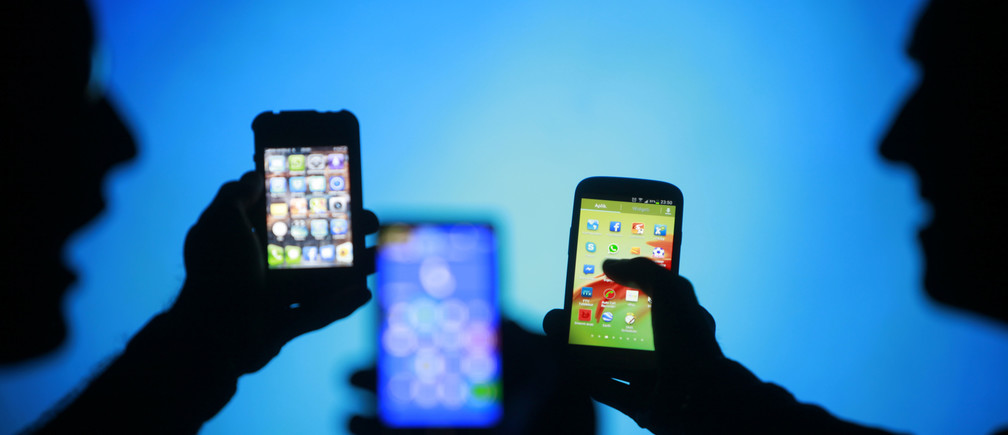Measuring how well major public programmes are implemented remains a core governance challenge. With the increasing mobile-phone penetration in the country, Muralidharan, Niehaus, Sukhtankar, and Weaver make the case for leveraging this powerful tool to improve public service delivery.
The problem that leaders face in learning ‘what is happening on the ground’ is an age-old one. Historically, emperors from Ashoka to Akbar would roam around their kingdoms in disguise to observe the true state of affairs. Today, measuring how well our major public programmes are implemented remains a core governance challenge. Lower-level officials have incentives to underreport problems and exaggerate their performance, which, along with the sheer scale of India, makes it difficult for senior leaders to get an objective picture of ‘ground realities’
Technological advances may let us do better than travelling in disguise. In particular, mobile-phone penetration in India has grown from 1 mobile subscriber per 100 people in 2002 to 62 in 100 in 2017. While mobile phones have transformed everyday lives in many ways (Agrawal 2018), their potential for improving governance and service delivery has not yet been realised. Many programmes have hotlines for inbound calls to record grievances, but we have found (Muralidharan et al. 2017) that beneficiaries rarely use them – and even if some did, this would not give us a true picture of the typical beneficiary experience. Instead, governments might do better by proactively calling people, and asking a random sample about their experiences with public programmes. Doing this regularly could provide real-time data on performance to both inform policymakers and motivate policy implementers.
We recently tested this approach in Telangana in the context of the high-profile Rythu Bandhu Scheme (RBS). Under this scheme, the Government of Telangana (GoTS) provided Rs. 4,000/acre to farmers per agricultural season to help pay for key inputs like seeds and fertiliser. Payment was issued in the form of cheques distributed to farmers through the office of the Mandal (sub-district) Agricultural Officer (MAO). The programme was a top priority for GoTS and was carefully monitored. Yet as usual there were various implementation risks, including cheques not issued, not delivered, delivered late, or delivered with a request for a bribe.
To improve programme implementation, we worked with GoTS to call over 20,000 RBS beneficiaries in a two-week span and ask a few basic questions: whether and when the beneficiaries received their cheque, cashed it, and whether they had to pay a bribe. Around 25% of MAOs were informed that this monitoring was happening and would be used to generate individualised performance reports for them and their managers. Importantly, these MAOs were randomly chosen, which allowed us to measure the impact of monitoring by comparing outcomes across areas with and without phone monitoring.
As it turns out, this simple announcement had a significant positive impact on implementation. Even in areas without phone-based monitoring, implementation was reasonably good: 83% of farmers received and encashed their cheques. However, farmers did better in areas with phone-based monitoring, where they were 1.5% more likely to receive and encash their cheques. The monitoring benefited the disadvantaged even more, with farmers in the bottom quarter of land holdings 3.3% more likely to encash their cheques. And benefits were similar for farmers with and without phones (though we could only call those with phones), suggesting that MAOs did not cater only to those with a phone. Overall, the call centres were highly cost-effective, delivering an additional Rs. 70 million to farmers at a cost of Rs. 2,500,000 – a lower administrative cost (3.6%) than in any anti-poverty programme for which we have data.
The benefits of this approach could be higher in other settings and in the longer run. Flagship programmes like the PDS (public distribution system) or MNREGS (Mahatma Gandhi National Rural Employment Guarantee Scheme) have significantly more room for improvement in many places than did the RBS in Telangana. Further, monitoring by phone could be paired with explicit rewards or sanctions to motivate implementing officials (something GoTS did not do in our experiment), and with public disclosure of statistics to also build bottom-up democratic accountability. More broadly, regularly measuring performance will give managers objective metrics to guide personnel management (including increments, promotions, and postings), which global evidence (Bloom and Van Reenen 2010) suggests is the most important component of management.
India is already a leader in providing call centre services for the world. Why not leverage this powerful tool to improve governance at home? Mobile phones are widespread, and phone calls can measure anything that the human eye can observe, meaning that they can monitor a broad range of social programmes, ranging from receipt of PDS benefits or MNREGS work to presence of teachers in schools. While further testing is needed to optimally use this approach in other sectors and states, our results suggest that the returns to doing so may be large.


